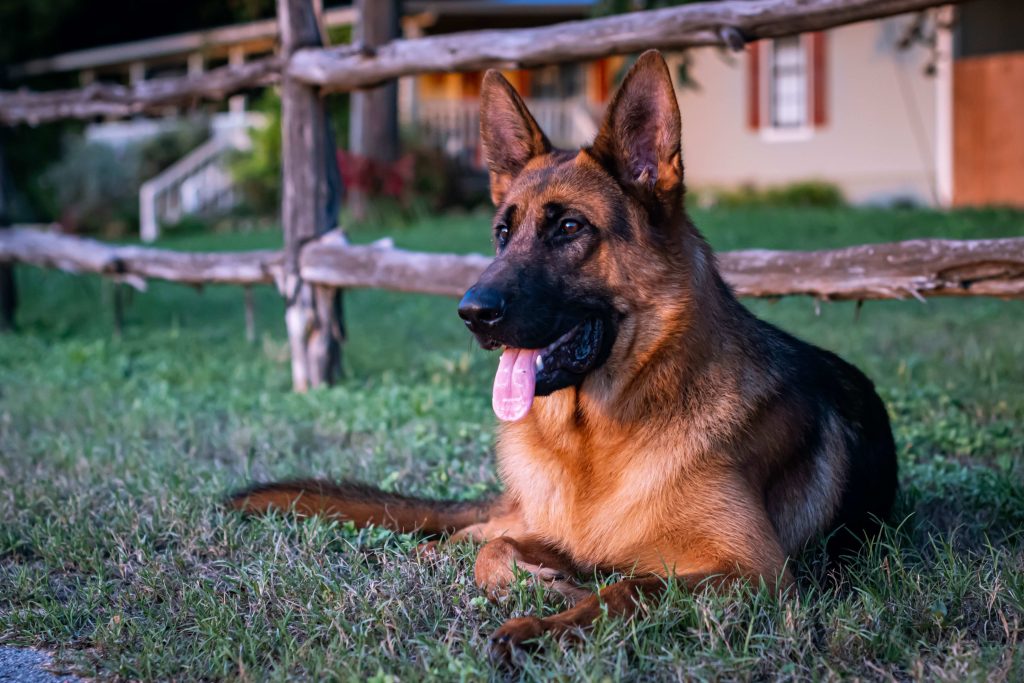Comparison Among Working Dog Breeds: Which is the Best for Outdoor Activities?

Evaluating Key Aspects of Working Dog Breeds for Outdoor Living
When embarking on outdoor adventures with a canine companion, the selection of a suitable working dog breed can significantly enhance your experience. These breeds have been honed through generations to fulfill specific roles, making them exceptionally adaptable for various outdoor activities. But how can you accurately assess which breed aligns with your active lifestyle? Here are some pivotal factors to gauge your choice.
Energy Levels
Energy levels are a critical consideration when selecting a working dog. Breeds such as the Border Collie, renowned for their unyielding energy and agility, thrive in environments requiring stamina, making them perfect for hiking or long runs. In contrast, breeds like the Newfoundland are stockier and may not require as much exercise, making them better suited for leisurely outdoor activities such as fishing or relaxed walks.
Temperament
The temperament of a dog influences how it interacts with its surroundings, including people, other pets, and wildlife. For example, Golden Retrievers are celebrated not just for their friendly disposition but also for their sociability, which can enhance family outings. Conversely, Rottweilers can offer protective instincts, making them suitable for outdoor environments where security is a concern, but they require socialization to ensure they behave well around strangers.
Trainability
Trainability plays a pivotal role in a dog’s adaptability to various outdoor scenarios. Breeds like the Australian Shepherd are renowned for their intelligence and eagerness to learn, making them excellent companions for activities demanding obedience, such as agility training or search and rescue missions. Alternatively, while Chihuahuas are often overlooked for outdoor adventures, they can be trained for specific tasks that suit smaller environments, even if they’re not ideal for the rugged outdoors.
Top Working Dog Breeds for Outdoor Activities
- German Shepherds: Their intelligence, loyalty, and versatility make them well-suited for various roles, from companionship during hikes to specialized tasks such as search and rescue.
- Labrador Retrievers: Known for their friendly temperament and love for water, these dogs are ideal for swimming, fetching, and even boating activities.
- Siberian Huskies: Their endurance and thick coats make them excellent companions for cold-weather activities like sledding or winter hiking.
- Belgian Malinois: Agile and highly trainable, these dogs require lots of physical activity, making them perfect for active owners who enjoy challenging outdoor pursuits.
Choosing the right working dog breed can transform your outdoor experiences into unforgettable adventures. In this article, we’ll explore the unique characteristics of these breeds in greater detail, allowing you to make an informed decision that aligns with your lifestyle. Discover the dog that could become your ultimate outdoor companion and elevate your exploration of nature!

DISCOVER MORE: Click here to learn about the importance of positive reinforcement
Key Characteristics of Working Dog Breeds for Outdoor Activities
When it comes to outdoor adventures, not all dogs are created equal. Understanding the unique characteristics of working dog breeds can help you pinpoint the ideal companion for your outdoor lifestyle. While energy levels, temperament, trainability, and external factors like climate adaptability are vital considerations, the compatibility of these traits with your specific activities defines your overall experience. Let’s delve deeper into these attributes to reveal which breeds notably excel in outdoor settings.
Adaptability to Climate
The adaptability to climate is crucial, especially when considering outdoor activities that may take place in varying weather conditions. Breeds like the Siberian Husky are built for the cold with their thick, double coats, making them perfect partners for winter hiking or snowshoeing. Conversely, dogs like the Vizsla are more suited for warmer climates, thriving in activities such as running or swimming in the summer. This adaptability not only impacts your dog’s comfort but can also affect their performance during these adventures.
Socialization Needs
Another vital aspect to evaluate is the socialization needs of the breed. Working dogs such as the Belgian Malinois need proper interaction with people and environments to be well-adjusted in outdoor settings. Their high intelligence often correlates with a need for mental stimulation and social engagement; hence, they excel in busy environments. In contrast, more solitary breeds like the Rottweiler may be comfortable in quieter settings, making them ideal for more secluded outdoor excursions where security is a priority.
Physical Requirements and Success in Outdoor Activities
Understanding the physical requirements of different working dog breeds can help you anticipate their performance in outdoor scenarios. Breeds such as the German Shepherd and Border Collie generally require substantial physical exertion to keep them happy and healthy. Training these breeds for outdoor activities like agility courses and hiking can be an exhilarating challenge. On the other hand, breeds like the Great Pyrenees work well in the mountains but are more suited to slower-paced activities because of their impressive size and strength.
Top Considerations for Choosing a Working Dog
- Exercise needs: Select a breed that matches your activity level. High-energy breeds thrive in vigorous outdoor activities, while others may prefer less strenuous options.
- Health considerations: Some breeds are predisposed to certain health issues, which could affect their ability to participate in outdoor activities.
- Coat maintenance: Consider how much grooming and care your dog’s coat will require, especially in rugged outdoor environments.
- Purpose of companionship: Clarify the main role you want your dog to fulfill—whether it’s a fitness buddy or a more protective presence while you’re out in nature.
As you contemplate the best working dog breed for your outdoor pursuits, examine these important differences to ensure you find a match that fits your lifestyle. In the following sections, we will expand on individual traits, providing deeper insights into how these dogs can enhance your outdoor adventures and contribute to a cherished partnership as you explore the great outdoors.
Working Dog Breeds: Key Traits for Outdoor Enthusiasts
When considering the best dog breeds for outdoor activities, it is essential to dive into the specific traits that make certain breeds uniquely suited for adventure. Working dog breeds are typically characterized by their high energy levels, intelligence, and a natural instinct for tasks. These characteristics are crucial when engaging in outdoor activities, such as hiking, running, or exploring.
Adaptability and Endurance
One of the primary factors to evaluate is a dog’s adaptability to various terrains and climates. Breeds like the German Shepherd and Bernese Mountain Dog possess remarkable endurance and adjust well to diverse environments, from mountainous trails to riverside walks. Their ability to withstand varying temperatures while remaining physically active makes them top candidates for outdoor adventures.
Trainability
A dog’s trainability is another essential consideration for outdoor activities. Breeds such as the Border Collie and Australian Shepherd are renowned for their intelligence and eagerness to learn. Their capacity to follow commands and be trained for specific outdoor tasks is not just beneficial; it can also enhance the enjoyment of any outdoor outing. Strong recall abilities are particularly valuable in environments with potential distractions.
A Brief Overview of Outdoor-Friendly Breeds
| Working Dog Breed | Ideal Outdoor Activity |
|---|---|
| German Shepherd | Hiking and Agility Training |
| Border Collie | Frisbee and Obstacle Courses |
| Bernese Mountain Dog | Long Hikes in Cool Weather |
| Australian Shepherd | Chasing and Herding |
Examining these breeds provides a clearer picture of which working dogs excel in outdoor settings. Factors like adaptability, trainability, and endurance make all the difference. Each dog comes with its unique set of characteristics, which can tailor your outdoor experiences wonderfully. Understanding the strengths of each breed will help potential dog owners make informed decisions about their best match for outdoor activities.
DISCOVER MORE: Click here to learn about recognizing stress and anxiety in pets
Assessing Energy Levels and Temperament
Your outdoor canine companion’s energy levels and temperament play pivotal roles in determining their suitability for various activities. Working dog breeds vary widely in both aspects, which can significantly enhance or dampen your outdoor experiences. Breeds like the Labrador Retriever are not only enthusiastic but also exhibit friendly temperament traits, making them perfect for family hikes and water activities alike. On the flip side, dogs like the Belgian Malinois possess a more intense drive and focus, often thriving in high-energy sports such as agility or nose work.
Durability and Stamina
Consider the durability and stamina of working dog breeds when planning long outdoor excursions. Breeds like the Airedale Terrier and Alaskan Malamute are known for their remarkable endurance and can tackle extended hikes or camping trips. Such breeds do well in environments that push their physical limits, thanks to their robust build and stamina. In contrast, breeds like the Newfoundland, while affectionate and loyal, are adaptable to leisurely rather than strenuous activities, requiring shorter bursts of exercise before needing rest.
Intelligence and Trainability
Intelligence and trainability are crucial elements to consider, particularly for outdoor activities that may require specific commands or skills. The Border Collie holds the title of one of the smartest dog breeds, excelling in tasks that demand agility, intelligence, and compliance. This breed’s trainability makes them stellar partners for complex outdoor pursuits like tracking, agility training, or even flyball. On the contrary, breeds like the Boxer may showcase intelligence but are often seen as more playful and less focused, which could lead to challenges in activities requiring precision and discipline.
Collaborative Nature and Partnership
The collaborative nature of a working dog influences how well they interact with their human counterparts in outdoor settings. Breeds such as the Golden Retriever are renowned for their friendly disposition and eagerness to please, facilitating a smoother bonding process for collaborative outdoor activities. This makes them ideal for families or individuals who want a true companion during outdoor adventures. In contrast, more independent breeds like the Chow Chow may prefer solitary activities, which can limit their effectiveness when teamwork during outdoor ventures is essential.
Exploration vs. Protection
- Exploratory dogs: Breeds like the Vizsla and Weimaraner are best known for their adventurous spirit, making them excellent choices for exploratory activities such as hiking, camping, and swimming.
- Protective breeds: Alternatively, dogs like the Akita or Rottweiler serve brilliantly as protective companions. Their presence can provide both physical protection and companionship during outdoor excursions, especially in remote areas.
By closely analyzing these aspects, you can make an informed decision on which working dog breed perfectly aligns with your outdoor pursuits. Each breed brings its own unique set of characteristics to the table, ensuring that you’ll have the ideal match for your adventurous lifestyle.
DISCOVER MORE: Click here to learn about the importance of consistency in pet training
Conclusion: Navigating Your Choices for Outdoor Adventures
In the quest to find the ideal working dog breed for your outdoor activities, it is important to weigh a multitude of factors that influence performance, compatibility, and enjoyment. Each breed showcases distinct attributes in terms of energy levels, temperament, durability, stamina, intelligence, and trainability. Breeds like the Labrador Retriever and Golden Retriever make fantastic family companions with their friendly dispositions, perfect for casual hikes and fun-filled days at the beach. However, for avid outdoor enthusiasts seeking adventure, breeds such as the Vizsla or Belgian Malinois stand out as excellent partners for more challenging pursuits.
It’s crucial to consider whether you need a dog that thrives in high-energy settings, such as the Border Collie, or one that offers strength and protection, such as the Rottweiler. Ultimately, each breed brings its unique flair to outdoor activities, making the choice a personal one—anchored in your lifestyle and the adventures you envision. By assessing your specific needs and preferences, you can find the perfect furry companion that enhances your outdoor escapades and becomes an integral part of your adventures.
In conclusion, the best working dog breed for outdoor activities is the one that aligns with your own activity level, companionship style, and longevity of interest in outdoor ventures. As you embark on this journey, remember that a well-matched dog not only enriches your adventures but also adds joy and companionship to everyday life.


